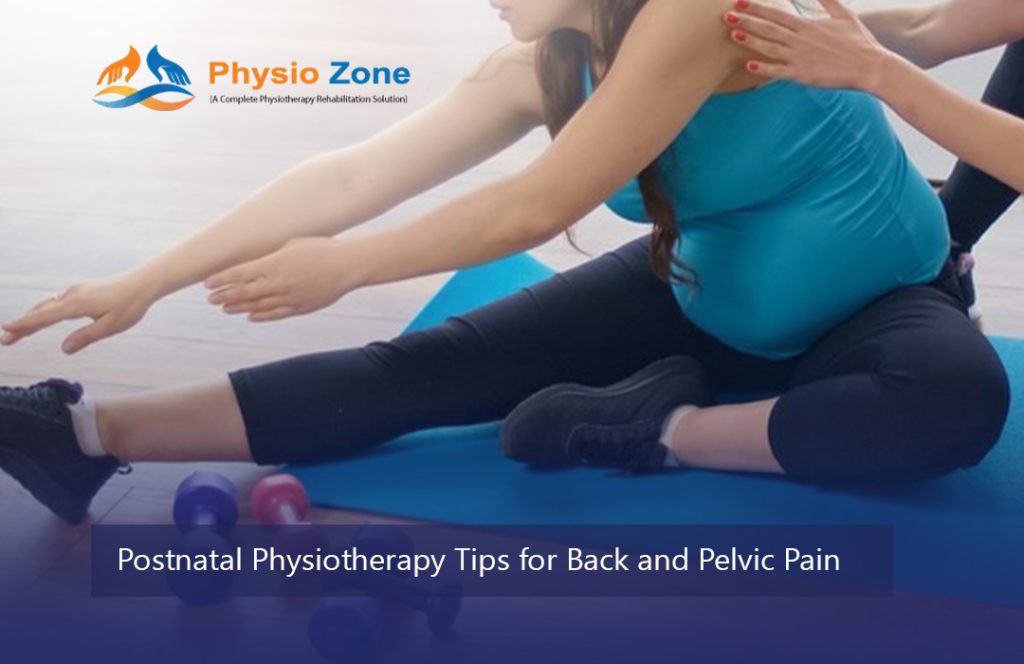Motherhood is beautiful, but it also brings physical challenges. Many women face back pain and pelvic pain after childbirth. These issues make daily activities, breastfeeding, or even walking uncomfortable. With the right Postnatal Physiotherapy Tips, recovery can be smoother, pain can be reduced, and strength can be restored. In this article, you will learn why postnatal physiotherapy is important, practical tips to ease pain, and when to seek professional help.
Why Postnatal Physiotherapy Helps
Postnatal physiotherapy plays a key role in healing after delivery or birth of a baby. The body goes through many changes during pregnancy and childbirth. Weak core muscles, stretched ligaments, and hormonal effects often cause pain. With proper physiotherapy:
- Pain relief becomes faster
- Muscle strength is restored
- Posture improves for breastfeeding and childcare
- Long-term complications are prevented
This is why many doctors recommend postnatal physiotherapy sessions for new mothers.
Back and Pelvic Pain Causes
Back and pelvic pain after childbirth is common. Some major causes include:
- Weak abdominal and pelvic floor muscles
- Hormonal changes that loosen ligaments
- Incorrect posture while feeding or lifting the baby
- C-section or vaginal delivery recovery stress
- Lack of physical activity after delivery
Understanding these causes helps in following the right physiotherapy tips.
Tips for Easing Back Pain
To recover from back pain, follow these simple physiotherapy tips:
- Use a supportive pillow while breastfeeding
- Avoid lifting heavy objects in the first months
- Apply warm compress for soothing muscles
- Gentle stretching under physiotherapist guidance
- Short walks daily to improve blood circulation
These small adjustments reduce pain and help you feel active.
Tips for Pelvic Pain Relief
Pelvic pain can be frustrating for new mothers. Some effective Postnatal Physiotherapy Tips include:
- Perform gentle pelvic floor (Kegel) exercises
- Avoid standing for long hours
- Use a pelvic support belt if recommended
- Try relaxation breathing to release tension
- Visit a physiotherapist if pain persists
These practices help the pelvic region regain stability and strength.
Posture Tips for Pain-Free Recovery
Poor posture worsens both back and pelvic pain. Correct posture is one of the most essential postnatal physiotherapy tips:
- Sit with your back supported while feeding
- Keep both feet flat on the floor
- Avoid slouching or bending suddenly
- Use ergonomic chairs for work or rest
- Sleep on your side with a pillow between knees
Right posture speeds up recovery and reduces discomfort.
Core Strengthening Physiotherapy Tips
Strong core muscles protect your spine and pelvis. Physiotherapists suggest:
- Start with gentle abdominal breathing exercises
- Progress to pelvic tilts and bridges
- Avoid crunches in the early stage
- Gradually move to light resistance training
- Always perform exercises under professional guidance
Building core strength ensures long-term back health.
Breathing Tips for Pain Recovery
Breathing techniques are simple but powerful in recovery:
- Practice deep diaphragmatic breathing
- Exhale slowly while tightening abdominal muscles
- Use breathing to relax during pelvic pain episodes
- Perform breathing exercises daily for stress relief
Better breathing supports oxygen flow and healing.
When to See a Physiotherapist
Sometimes, self-care is not enough. Visit a physiotherapist if:
- Pain lasts more than 6 weeks
- You feel numbness or tingling in the legs
- Daily activities become very difficult
- Urinary incontinence or pelvic heaviness occurs
- Posture correction and exercises are not helping
Professional guidance ensures faster and safer recovery.
Daily Lifestyle Support Tips
Along with exercises, lifestyle adjustments matter:
- Eat nutrient-rich food for muscle healing
- Stay hydrated throughout the day
- Use proper footwear to support posture
- Ask for family support instead of overstraining
- Maintain regular physiotherapy check-ups
These lifestyle habits make postnatal recovery easier and pain-free.
Frequently Asked Questions
What is postnatal physiotherapy?
Postnatal physiotherapy is a treatment method that helps women recover strength, posture, and mobility after childbirth.
How long should I continue postnatal physiotherapy?
Most mothers benefit from 6–12 weeks of guided physiotherapy, depending on their recovery.
Can postnatal physiotherapy cure back pain completely?
Yes, with regular practice and guidance, most back pain issues can be managed and reduced.
Is pelvic floor exercise plan safe after delivery?
Yes, gentle pelvic floor exercises are safe and highly recommended after delivery.
Do I need a doctor’s referral for physiotherapy?
Not always. You can directly consult a licensed physiotherapist.
Can I do postnatal exercises at home?
Yes, but starting under professional supervision is best to avoid wrong techniques.
Conclusion
Back and pelvic pain after childbirth should not stop you from enjoying motherhood. With the right Postnatal Physiotherapy Tips, you can ease pain, strengthen your body, and recover faster. Remember, small daily habits, correct posture, and professional guidance make all the difference.
If you are struggling with pain, don’t wait. Book your postnatal physiotherapy session today at Physio Zone BD for expert care and a pain-free recovery.

